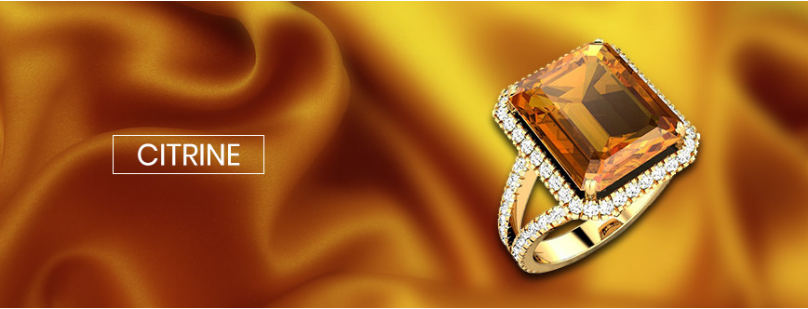
The gemstone is considered as the formal birthstone for people born in November as embraced by the American National Association of Jewelers in 1912. Likewise, it is the planetary stone for the Sun Sign of Virgo and the recognized gem for the 13th and 17th wedding anniversaries of couples. Citrine has been in demand for more than a thousand years, and it has always been adored for its irregularity; however, that has changed with time.
The colour is Citrine’s most significant attribute. Since yellow quartz is very uncommon, it has a wide variety of shades from lemon yellow to reddish-brown. Usually, the deeper coloured stones, including those with reddish tints, are more valued than the lighter ones.
The shade of reddish-orange is often described as ‘Madeira’.
There are some natural gemstones called ‘Ametrine’; that is composed of an uncommon mixture of Amethyst and Citrine. Typically, heated Citrine (Amethyst) will show a reddish tint.
Pale yellow Citrine is rarely discovered in nature. Due to its vibrant yellow colour, Citrine is the most preferred semi-precious gemstone after blue Topaz.
Types of Citrine:
Treated Citrine: It is produced at an elevated temperature by heating Amethyst. Heat handled Citrines colour is placed from yellow to orange tone with a white cap at the tip. Heat handled Citrine will also be crumbly and can easily split apart, but that doesn’t mean that Citrine should not be treated with heat or that you should not purchase treated Citrine. After heating, the treated Citrine develops an increased capacity.
Healing properties: Citrine diffuse vitality, nourishment, and good thoughts. It helps move energy upward from the solar plexus to open blockages in the upper chakras; detoxifies the kundalini channels and increases psychic ability to perceive information and promotes alertness. It’s also called” the stone of the merchant”.
Natural Citrine: Crystals that are generally very evident.
Healing Properties: Cleanses and detoxifies the emotional body and the kundalini line. It provides spinal balance at meridian and energy levels by balancing the motion of Ch’i. Natural Citrine is well-known for its ability to heal and also many associated properties.
Things You Need to Know About Citrine
- The word Citrine was officially used only after 1556. The stone was known as yellow quartz until then.
- Most Citrines are Amethysts or smoky quartzes that are treated with heat. The standard yellow colour of Citrine is rather pale, but the deeper shade of heat-treated gemstone is sometimes slightly yellowish.
- Citrine has been believed to have magical powers for a prolonged period, which were not exactly beneficial to human folk.
- The ‘merchant stone’ is another name for Citrine. Prosperity and achievement are thought to be attracted. For the same reason, it is believed that placing Citrine in your pocket or purse will not only attract wealth but will also help you sustain it. Has anybody attempted to verify whether this is true?
Instructions
- To prevent contact and friction with other gems, place citrine jewellery
- Do not use it while indulging in sports, strict outdoor or family work.
- Keep it away from harsh chemicals, particularly bleaches and acids.
- Always use a mild soap to clean Citrine jewellery.
- Place your Citrine jewellery away from sunlight and severe temperatures.

